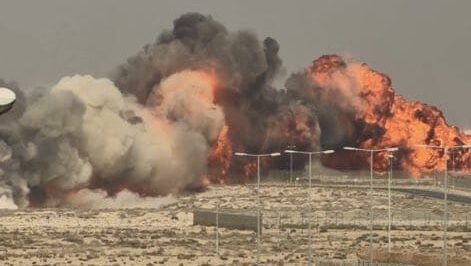An Indian fighter aircraft crashed during a flying display at the Dubai Airshow on Friday. The HAL Tejas jet, produced by Hindustan Aeronautics Limited, went down at around 2:10 pm local time while performing a demonstration flight for the audience. According to the latest reports, the pilot has been killed in the crash.
A detailed report on the Tejas crash, which occurred during the airshow in the United Arab Emirates, has now emerged. According to sources, the investigation has identified several serious faults in the aircraft’s structure, engine, and control systems that may have contributed to the accident.
The report suggests that a structural failure may have occurred during a high-G maneuver, where extreme stress during aerobatics could have damaged the aircraft’s frame. Experts believe the wing spar—the main load-bearing section inside the wings—may have developed cracks or delamination due to continuous pressure during flight.
Sources also indicate possible structural failure in the tailplane or elevator. Abnormal vibration in the control surfaces was also reported, which may have been caused by loose hinges or worn-out bearings.
Control System Failures
Investigators have pointed out major issues in the control system as well. A broken linkage could have caused the elevator, aileron, or rudder to jam. In older aircraft, snapped control cables or hydraulic system failure can also result in the pilot losing control of the aircraft.
Engine and Powerplant Malfunctions
Experts noted that the engine may have shut down during a vertical climb, causing the aircraft to stall and spin. They added that during negative-G forces, a fuel pickup problem might have disrupted the fuel supply to the engine, leading to an abrupt power loss.
Electrical and Instrumentation Issues
According to the report, the aircraft may have suffered electrical or instrumentation failures during aggressive maneuvers. A malfunctioning attitude indicator or gyroscope could have given the pilot incorrect information about the aircraft’s orientation. A dual-bus electrical failure might also have shut down systems such as electronic ignition or the FADEC engine control unit.
Other possibilities under review include runaway trim, which can force the aircraft’s nose sharply up or down, and bolt failure leading to the aileron or elevator detaching mid-flight. High-speed shockwaves may have created excessive pressure on the control surfaces, and canopy separation could have caused severe aerodynamic drag.
Experts are now reassessing the aircraft’s safety standards and maintenance protocols in light of the findings presented in the report.






